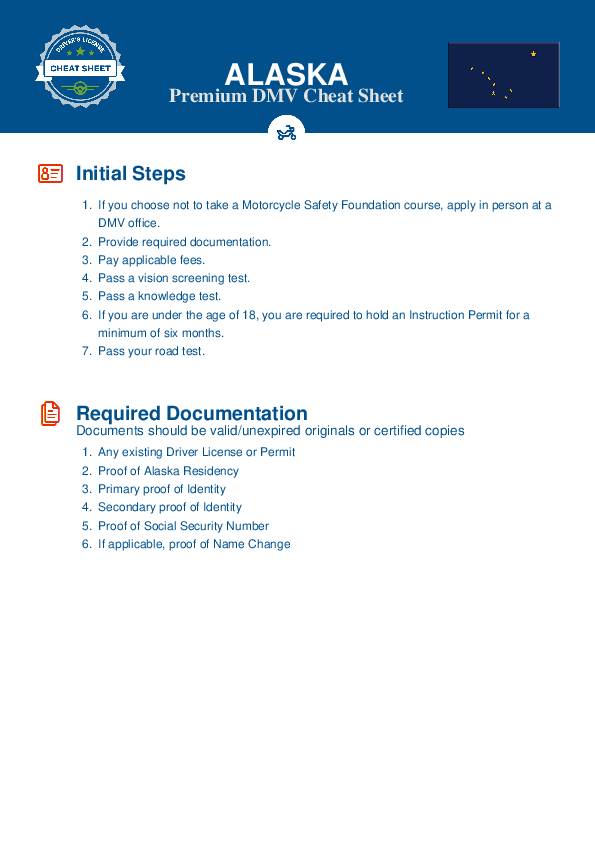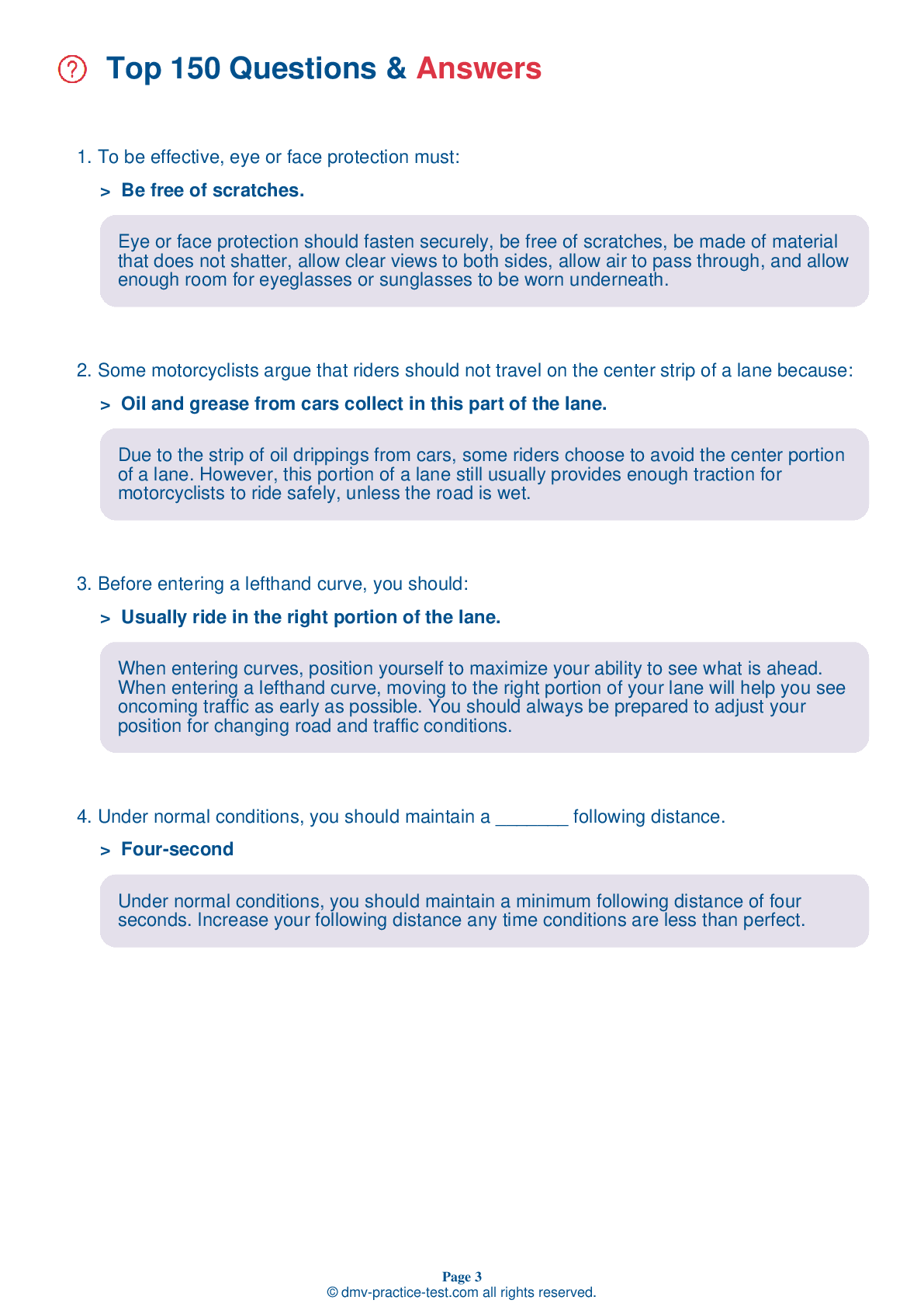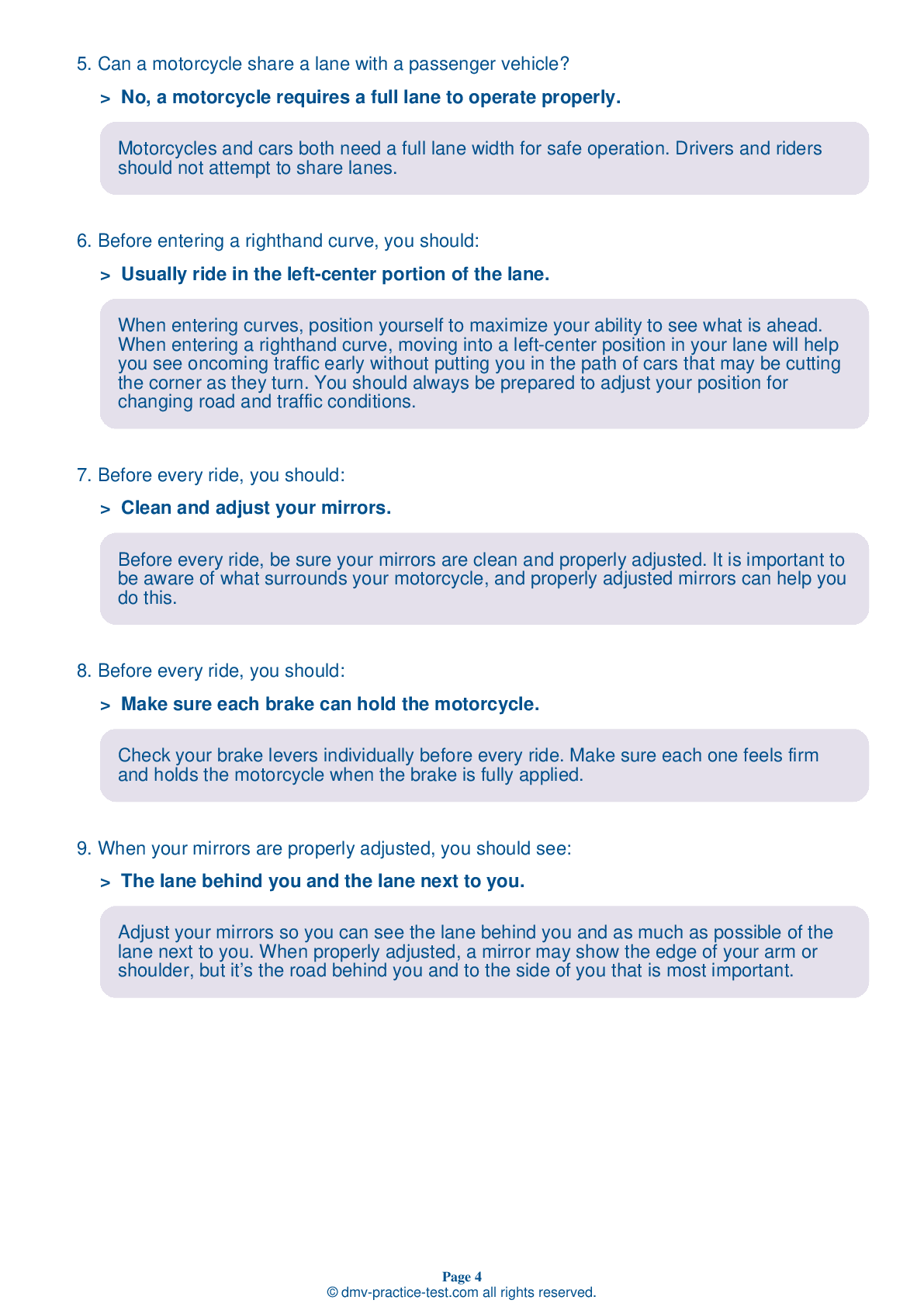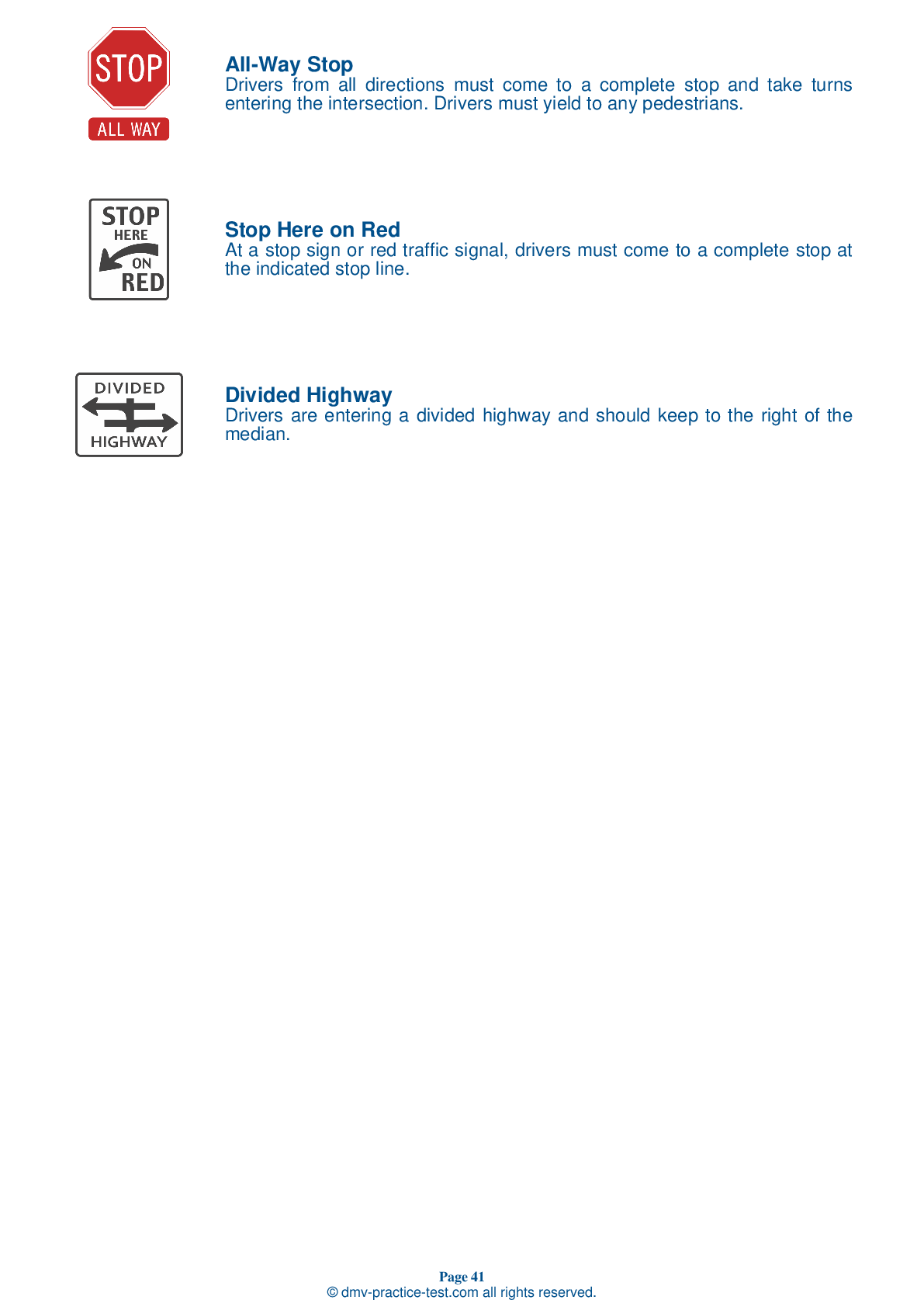Motorcycle Test | License AK 2024 | FREE Online Practice! #5 Page 3 of 4
Take this FREE motorcycle test (license in AK 2024) to check your knowledge of the road rules. To improve your results, download a motorcycle handbook online, study theory, and practice for free on our website. Still worried about how to get a motorcycle license in Alaska in 2024? Check our website for more sample tests, train as much as possible, and boost your grades!
13 . When riding a motorcycle, a jacket should be worn:
For your protection, you should always wear a long-sleeved jacket when riding, even in warm weather when you may not think you need a jacket. It can help protect you against the sun and dehydration in hot weather.
14 . A front tire blowout is especially dangerous because:
A front tire failure is especially dangerous because it affects your ability to steer. You will know your front tire has blown out if your steering begins to feel heavy.
15 . When a group of riders is passing another vehicle on a two-lane road, the riders should:
On a two-lane road, a group of motorcyclists should pass one at a time. Each motorcyclist should complete the pass before another begins to pass.
16 . When riding in a group, inexperienced riders should ride:
When riding in a group, inexperienced riders should ride just behind the leader near the front of the group. This allows more experienced riders to keep an eye on them from the back of the group.
17 . To swerve, you should:
To swerve, apply a small amount of pressure to the handgrip located on the side of your intended direction of escape. To swerve to the left, press the left handgrip, then press the right to recover. To swerve to the right, press the right handgrip, then the left.
18 . When being passed from behind, you should:
When being passed, the center portion of the lane is generally the safest lane position for a motorcyclist. Riding on the side nearest the passing vehicle increases the risk of colliding with it. Riding on the side farthest from the passing vehicle can also be dangerous because it may prompt the driver to return to your lane before it is safe to do so.
See the exact questions that will be on the 2024 Alaska DMV exam.
99.2% of people who use the cheat sheet pass the FIRST TIME
Jeneen was tired of paying $5/gallon. She got herself a scooter that required the motorcycle license. She studyed the motorcycle test cheat sheet and passed her test the next day!
Christopher tells us how he knew nothing prior to obtaining the motorcycle study guide, and he only got one question wrong because he clicked on the wrong answer by mistake.



